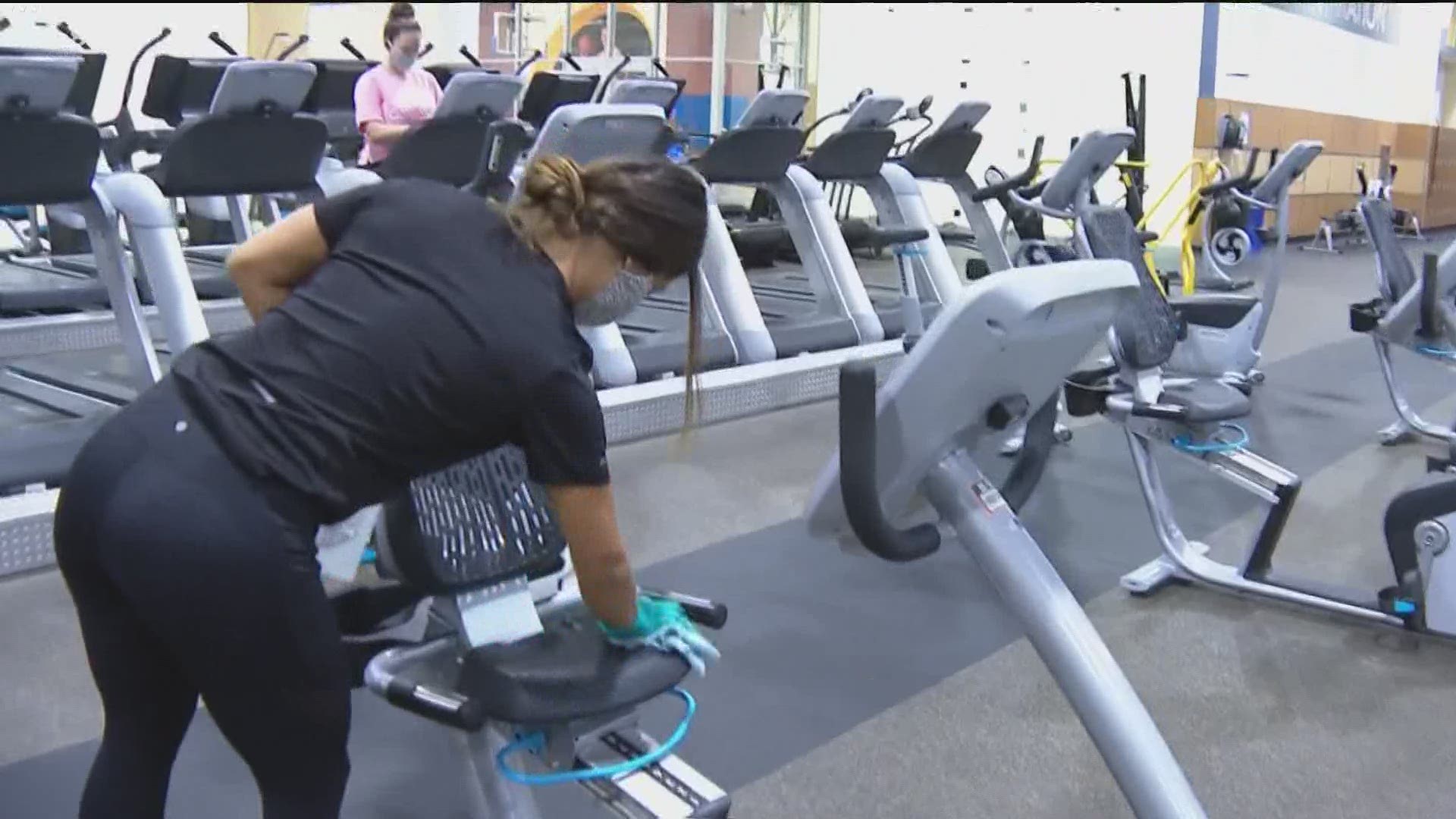SAN DIEGO — Indoor operations resumed at some businesses, with modifications, under new state guidelines that began Monday. San Diego County public health officials reported 304 new COVID-19 cases Monday, raising the county's cumulative cases to 38,604 while multiple industries reopened some indoor operations.
Restaurants, places of worship and movie theaters within San Diego County can reopen with 25% capacity or 100 people, whichever is less. Gyms, dance studios, yoga studios and fitness centers may not exceed 10% capacity.
Retail businesses are limited to 50% capacity. Hair salons, barbershops, nail salons and other cosmetology facilities were not subject to capacity limits.
The county also required restaurant patrons to always wear a face-covering, except while eating. Previously the county allowed diners to remove their covering when seated. The restaurant industry’s 10 p.m. curfew remains in effect.
All businesses that have been allowed to expand operations must complete a new “Safe Reopening Plan” to show how they will meet the new restrictions.
“We’ll come through and do a deep clean as well but if everybody helps to do their part and I think if we do that, we’ll stay open and make a big impact on our community as well,” said Jeremy Franke, Regional Vice President of 24 Hour Fitness.
The chain expressed optimism about reopening, even with the capacity restrictions, because its fitness centers tend to exceed 35,000 square feet, which they said allows for distancing.
Not all businesses were excited about the potential to reopen. Some small business owners held a protest outside the County Administration Center at Waterfront Park. They called on Gov. Gavin Newsom to further relax the rules to allow them to reopen faster.
“The combination of the extremely high cost of living here in San Diego and Governor Newsom's thoughtless policy towards fitness is literally forcing hundreds of families into bankruptcy,” said Scott Lutwak, CEO of Fit Athletic.
Other businesses said the cost of extra protective equipment, cleaning supplies and staff needed to support a reduced-capacity operation exceeded the potential profit they could make.
“I guess 25% is better than nothing, but nothing is nothing as well because I can't pay my rent with 25%,” said Thomas Hall, General Manager of Grass Skirt, a restaurant in Pacific Beach. “Honestly, it's like a lose-lose situation for all of us.”
California health officials are wary to reopen too quickly and repeat the surge of cases the state experienced in late-June and early-July when most industries reopened at full capacity.
The new guidelines and staggered reopening were based on weeks of back-and-forth between the California Department of Public Health and local health officers. San Diego County is the largest and most urban county in Tier 2, which allows for the resumption of some indoor operations. Its case rate is being closely watched to gauge if the new rules are successful in reopening the economy and maintaining a lower case rate.
On Monday, the county reported a daily rate of 5.8 per 100,000 residents based on a seven-day average with a seven-day lag under a new formula being used by the state.
The county must remain in Tier 2 for at least 21 days. It can move into Tier 3 when it has a case rate of 3.9 or lower for 14 consecutive days.
“We all know what the definition of insanity is and that’s to do the same thing over and over and not expecting the same results,” said Dr. Wilma Wooten, M.D., M.P.D., the county’s public health officer. “We opened in mid-June and we know what happened there. This is a new approach a gradual approach and we hope our businesses can hang in there.”

